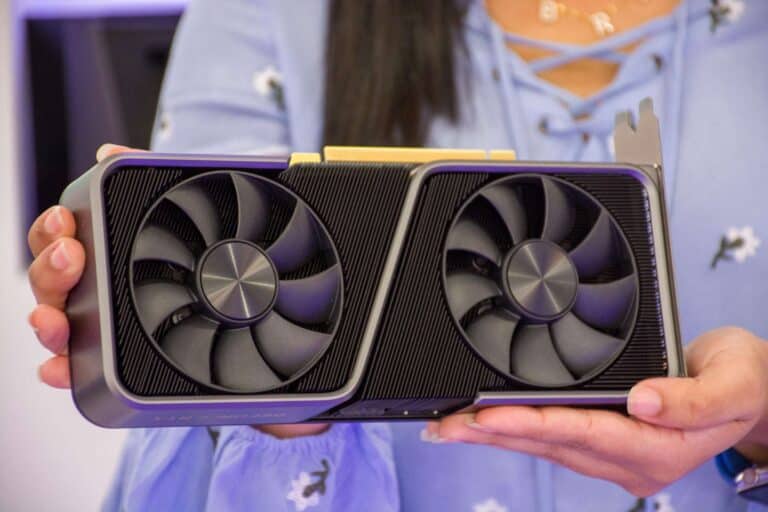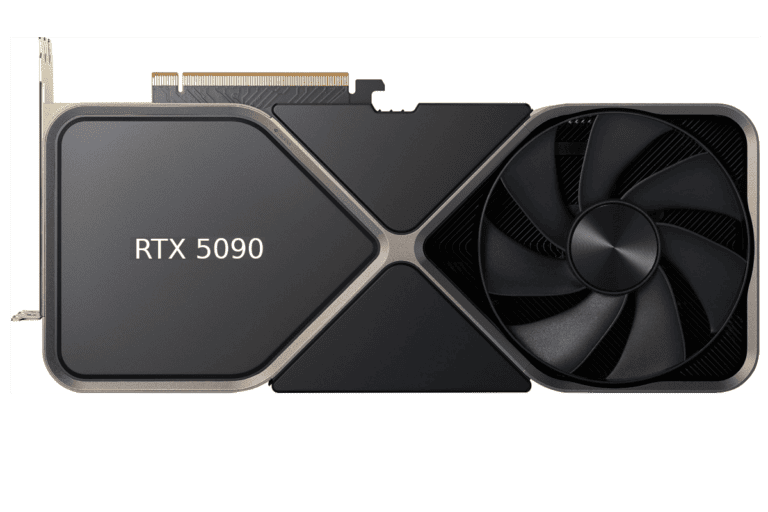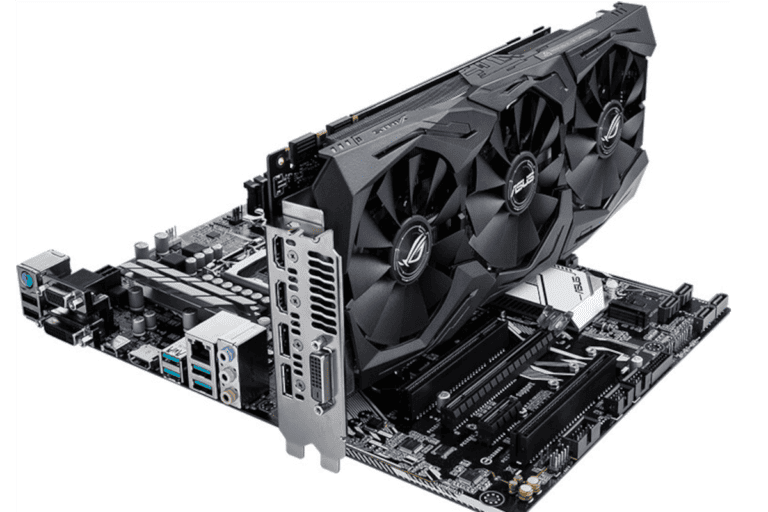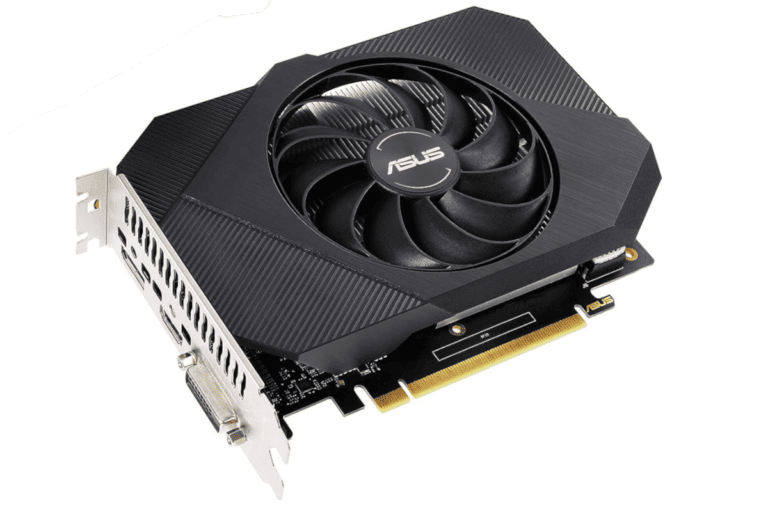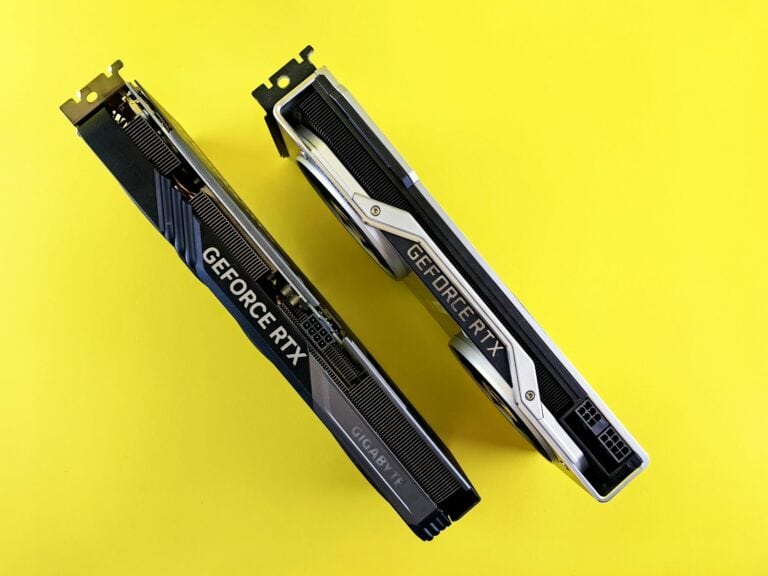The NVIDIA L4 Tensor Core GPU marks a significant step forward in computing technology, aimed at professional applications spanning from AI and video processing to advanced graphics rendering. Based on NVIDIA’s Ada Lovelace architecture, this powerful accelerator is built to substantially improve performance across these demanding areas. Its integration of fourth-generation Tensor Cores allows it to handle complex computations much more efficiently compared to traditional CPU-based solutions.
A Powerhouse for AI and Graphics: NVIDIA L4 GPU
NVIDIA’s L4 Tensor Core GPU, powered by the Ada Lovelace architecture, is a game-changer for data centers. It delivers universal, energy-efficient acceleration for diverse workloads like video, AI, visual computing, graphics, virtualization, and more. Its low-profile form factor and cost-effectiveness make it a versatile solution for every server.
Accelerate a Wide Range of Workloads
The L4 is a cornerstone of NVIDIA’s data center platform, designed to tackle a vast array of applications. From video and AI to NVIDIA RTX™ virtual workstations (vWS), graphics, simulations, and data analytics, this GPU accelerates over 3,000 applications, ensuring dramatic performance gains and energy efficiency.
Optimized for Mainstream Deployment
Tailored for widespread use, the L4 sports a low-profile design and operates within a 72W power envelope. This makes it a budget-friendly and efficient solution for any server or cloud instance within NVIDIA’s partner ecosystem.
Key Features and Benefits
| Feature | Benefits |
|---|---|
| Advanced Video and Vision AI Acceleration: | Offers an optimized AV1 stack, opening up possibilities for real-time video transcoding, streaming, video conferencing, AR/VR, and vision AI. |
| Quad Video Decoders and Dual Video Encoders: | Enables L4 servers to host over 1,000 concurrent video streams, with 120x more AI video end-to-end pipeline performance compared to CPUs. |
| Tensor Cores: | Delivers exceptional multi-precision performance for accelerating deep learning and machine learning training and inference. |
| Full Support for AI Frameworks and Models: | Supports all AI frameworks and neural network models, maximizing the utility of large-scale deployments. |
| Efficient, Cost-Effective Solution: | Provides a low-profile form factor and operates in a 72W low-power envelope, making it an ideal choice for any server. |
The Future of Accelerated Computing
The NVIDIA L4 represents a significant step forward in accelerating a wide range of workloads. With its versatile capabilities, this GPU is set to redefine how we approach data center computing, offering improved performance, efficiency, and cost-effectiveness for businesses and organizations.
Nvidia L4 GPU
| Category | Details |
|---|---|
| Manufacturing Process | 5nm process |
| Graphics Processor (GPU) | AD104 (Lovelace) |
| Transistors | 35.8 billion |
| Shader Units | 7680 |
| Texture Mapping Units | 240 |
| ROPs (Render Output Processors) | 80 |
| Tensor Cores | 240 |
| Ray Tracing Cores | 60 |
| Memory | 24GB GDDR6 |
| Power Consumption | Maximum 72W |
| Form Factor | Single-slot, half-height, half-length |
| Cooling | Passive cooling (requires airflow) |
The NVIDIA L4 boasts an impressive set of specifications, including 24 GB of GDDR6 memory, and it is designed to be a versatile fit for various computing environments with its single-slot, half-height, and half-length card format. The launch of this GPU addresses the increasing need for more powerful and efficient computing in professional spaces, particularly for tasks involving machine learning, high-fidelity graphics, and detailed video processing.
The L4 enters the market with the promise of advancing the capabilities in data centers and at the edge, meeting the growing demands for performance and efficiency in an era where rapid data processing is critical. Available since March 2023, professionals across numerous industries rely on the L4 for its substantial increase in AI video performance and its enhanced ability to manage real-time rendering and ray tracing workloads.
Key Takeaways
- The NVIDIA L4 Tensor Core GPU is designed for a wide range of professional computing tasks, leveraging the Ada Lovelace architecture.
- This GPU significantly surpasses traditional CPUs with its specialized computation abilities and robust memory configuration.
- Professionals depend on the NVIDIA L4 for improved performance in AI, video processing, and advanced graphical workloads.
Nvidia L4 Overview
The Nvidia L4 Tensor Core GPU marks a significant step in graphics and AI processing. With the Ada Lovelace architecture at its heart, this GPU is tailored for efficiency and high performance in various computing environments.
Architecture and Design
The L4 GPU draws its power from the Ada Lovelace architecture, which is built on a 5 nm process. This enables the GPU to perform complex calculations swiftly, making it a strong choice for heavy workloads. Its design follows the NVIDIA Form Factor 5.5 specification, resulting in a half-height, half-length card that fits a single slot in a PCIe card form factor. The architecture supports a 192-bit memory interface and is equipped with the third-generation RT cores and fourth-generation Tensor cores. These cores are integral to the card’s ability to process ray-traced graphics and AI tasks efficiently.
Innovations in AI and Graphics
The Nvidia L4 Tensor Core GPU excels in AI performance. With AI, video processing can occur up to 120 times faster compared to traditional central processing units (CPUs). Moreover, generative AI work, which entails creating new content based on learned data, performs 2.7 times better than CPU-only solutions. The combination of Nvidia Ada’s modern architecture and the latest Tensor cores results in a card that not only improves upon its predecessor, the NVIDIA T4 GPU, by over four times in performance. It supports extensive tasks ranging from video encoding to complex 3D rendering, making it an adaptable solution for data centers and edge computing alike.
Performance and Applications
NVIDIA’s L4 Tensor Core GPU is a multifaceted platform that excels in various computational tasks crucial to modern technology sectors.
AI and Inferencing Capabilities
The NVIDIA L4 is a powerhouse when it comes to AI and inference. It is tailored to accelerate AI applications, with capabilities that serve video analysis, content recommendation, and advanced image generation. Equipped with Tensor Cores and specific AI-driven instruction sets, this GPU drastically improves inference performance, which is the action of applying trained AI models to new data. It supports frameworks such as NVIDIA AI Enterprise and is adept at tasks like object detection and speech recognition. These features make the L4 suitable for Edge AI, alleviating the need for data to travel back to central servers, thereby reducing latency and enhancing real-time performance.
Enhancing Data Center Operations
For data centers, the L4 GPU represents a significant advancement in operational efficiency. It is crafted to slot seamlessly into existing CPU-based infrastructures, thereby lowering the total cost of ownership. Thanks to its energy-efficient nature, it offers a greener computing option with a smaller carbon footprint. The result is more efficient enterprise data center operations with a focus on scalable AI and compute capabilities. NVIDIA-certified systems ensure compatibility and secure boot, providing reliable and upgraded data center experiences.
Graphics and Computational Efficiency
The L4 GPU shines in graphics and computational efficiency. It supports NVIDIA RTX technology, which includes ray tracing and DLSS 3 for intricate and lifelike rendering, elevating visual computing to new heights. Its design enables it to tackle the strenuous demands of virtual workstations, rendering virtual worlds, and cloud gaming. Additionally, with a bevy of CUDA, Tensor, and RT Cores, the L4 facilitates advanced tasks such as simulation and VR while maintaining low-profile form factors and high energy efficiency. Further bolstering its graphics performance are features like DLSS—a deep learning super sampling technology—providing crisper images without the high computational burden.
Frequently Asked Questions
This section addresses popular queries regarding the Nvidia L40 graphics card, providing specific information on release dates, performance comparisons, and technical specifications.
When is the expected release date for the Nvidia L40?
The release date for the Nvidia L40 has not been officially announced by NVIDIA. Details regarding its availability will likely be disclosed closer to its launch.
How does Nvidia L40 compare in performance with Nvidia RTX 4090?
The Nvidia L40 is designed for AI and computational workloads and offers specialized acceleration for these tasks. In contrast, the RTX 4090 caters to high-end gaming with real-time ray tracing capabilities. Direct performance comparison is difficult due to their different intended uses.
What are the technical specifications of the Nvidia L40 GPU?
The Nvidia L40 GPU features the Ada Lovelace architecture and includes 24 GB of GDDR6 memory. It is optimized for high throughput and low latency, suited for tasks from video processing to AI applications.
What is the difference in capability between Nvidia L40 and Tesla T4?
The Nvidia L40 outperforms the Tesla T4 with a significant increase in AI video performance—by over four times—and is more efficient for data center deployment in PCIe-based servers.
Can you specify the memory capacity of the Nvidia L40 graphics card?
Yes, the Nvidia L40 graphics card is equipped with 24 GB of GDDR6 memory, facilitating complex computations and large-scale AI deployments.
Which CUDA version is compatible with the Nvidia L40?
While specific CUDA version compatibility for the Nvidia L40 is not detailed, it is expected to support the latest CUDA versions available at its release, ensuring efficient programming and execution of parallel workloads.


